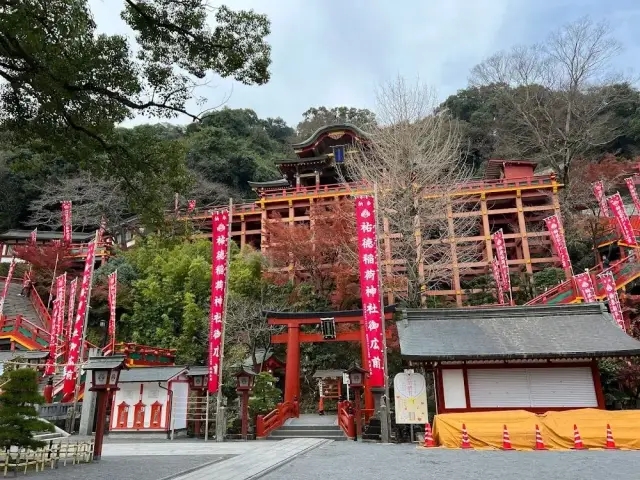https://www.dekitabi.com/itinerary/saga-day-trip-yutoku-inari-shrine
Nestled in the scenic mountains of Kashima City, Saga Prefecture, Yutoku Inari Shrine stands as a testament to Japan’s rich cultural and spiritual heritage. As one of the most revered Inari shrines in the country, it offers a captivating experience for visitors interested in Japan’s ancient traditions and stunning architecture. In addition, the nearby Yutoku Museum provides an insightful exploration into the shrine’s history and the cultural significance of its artifacts.
Yutoku Inari Shrine: A Spiritual Sanctuary

https://www.dekitabi.com/attraction/yutoku-inari-shrine
Yutoku Inari Shrine is celebrated for its vibrant red torii gates that create a striking contrast against the lush green backdrop of Mount Koyasan. The shrine, established in 1688, is dedicated to Inari, the Shinto deity of agriculture, fertility, and rice. Its significance extends beyond local reverence; it is considered one of the three major Inari shrines in Japan, alongside Fushimi Inari Taisha in Kyoto and Taiyokami Shrine in Nara.
Visitors to Yutoku Inari Shrine will be enchanted by its grand entrance, marked by a series of majestic torii gates that lead up to the main shrine building. The approach to the shrine is a spiritual journey, with each gate symbolizing a transition into a sacred space. The path winds through the forested slopes, providing a tranquil escape from the bustle of modern life.
The shrine’s architecture is a masterpiece of traditional Japanese design, featuring intricate wood carvings and vibrant colors. The main hall, or honden, is adorned with elaborate decorations that reflect the craftsmanship of the Edo period. The shrine complex also includes several auxiliary buildings, each serving as a testament to the shrine’s historical and cultural significance.
One of the shrine’s most remarkable features is its sacred fox statues, which are believed to be messengers of Inari. These statues, often depicted holding a key in their mouths, are a common sight throughout the shrine grounds. The foxes are integral to the shrine’s iconography and add to the mystical atmosphere of the site.
The Yutoku Museum: A Gateway to History

https://www.dekitabi.com/attraction/yutoku-museum
Located adjacent to the Yutoku Inari Shrine, the Yutoku Museum offers a fascinating insight into the history and cultural heritage of the shrine. Established to preserve and showcase the shrine’s historical artifacts, the museum provides visitors with a deeper understanding of the traditions and practices associated with Inari worship.
The museum’s collection includes ancient manuscripts, ceremonial objects, and historical relics that highlight the shrine’s significance through the ages. Exhibits are meticulously curated to offer context and background, making it an ideal destination for those interested in Japan’s religious history and cultural practices.
One of the museum’s standout features is its comprehensive display of traditional Shinto rituals and festivals. Visitors can explore the various ceremonies that are performed at Yutoku Inari Shrine, gaining insights into the customs and beliefs that have been passed down through generations.
Additionally, the museum features interactive displays and educational programs that cater to visitors of all ages. These programs are designed to enhance the visitor experience, providing a hands-on approach to learning about Japanese history and culture.
Explore the Spiritual and Historical Riches of Kashima
A visit to Yutoku Inari Shrine and the Yutoku Museum offers a unique opportunity to delve into Japan’s spiritual and historical heritage. Whether you are drawn to the shrine’s architectural beauty, its sacred traditions, or the museum’s informative exhibits, these destinations promise an enriching experience.
Incorporating elements of both spiritual reflection and historical exploration, Yutoku Inari Shrine and the Yutoku Museum present a captivating journey through Japan’s cultural landscape. The shrine’s serene environment and the museum’s detailed exhibitions combine to offer a comprehensive understanding of the significance of Inari worship and its role in Japanese history.
As you explore the tranquil paths of Yutoku Inari Shrine and immerse yourself in the historical treasures of the Yutoku Museum, you’ll gain a deeper appreciation for the rich tapestry of Japanese tradition. This journey into the heart of Kashima City reveals the enduring legacy of Inari worship and the cultural treasures that continue to inspire and captivate visitors from around the world.


Leave a Reply